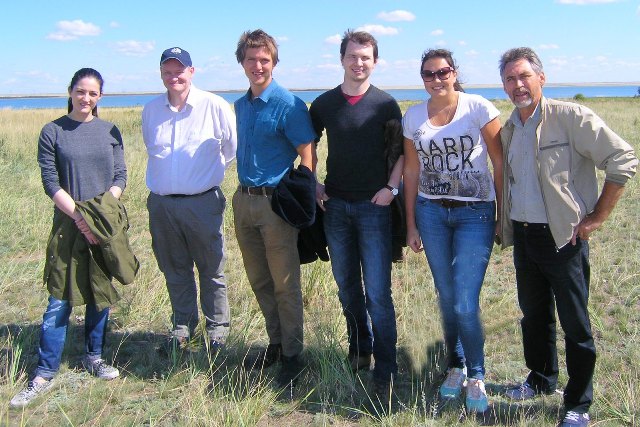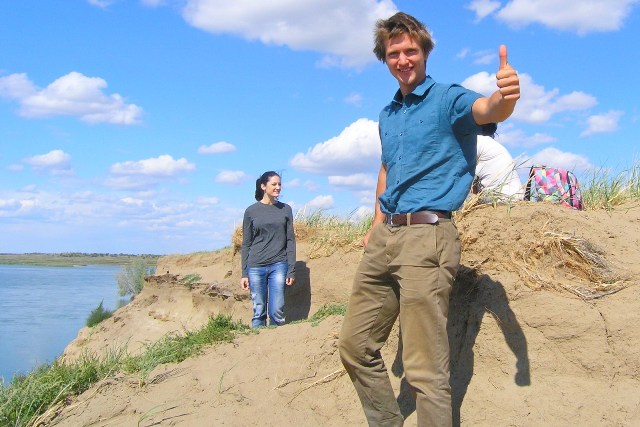The group of scientists from Great Britain, Germany and Denmark, conducting natural science researches of anthropological and paleozoological materials, which were found by PSU’s archaeologists, has visited S. Toraighyrov Pavlodar State University.
Among them are Alan Outram from the University of Exeter, geneticist Angela Perry from the Institute of Max Planck and Danish researcher Peter Damgard from the University of Copenhagen.
Danish researcher Peter Damgard has been looking for proof of “Kurgansk hypothesis”, which binds the origin of European nations with steppe tribes of the Eneolith and Bronze Age, for a long period of time, in this connection, he visited the university in February of this year. The first results of genetic researches of ancient peoples of the Pavlodar region and other regions of Kazakhstan made him come here for the second time to get additional materials for his researches, which were found by A. K. Margulan archaeological scientific-research center staff of PSU. The problem of Indo-Europeans’ origin, as well as the origin of other ancient peoples, including Turki, is covered by his researches.
At the present time scientists continue their researches of DNA samples of ancient peoples of the Pavlodar region in order to verify the theory of their kinship with Europeans. According to the “Kurgansk hypothesis”, which was first put forward by Lithuanian-American researcher Marija Gimbutas in 1956, Indo-European native land was situated in Pontiysk steppes. The given territory stretches from Eastern Ukraine and Southern Russia to the North-West of Kazakhstan, from where first Indo-Europeans immigrated not only to Europe, but also deep into Asia.
That is why it is important to investigate the ancient peoples’ DNA samples, since the most ancient archaeological materials, which reflect the processes, have been found here in the Pavlodar region.
Today among Kazakh scientists only archaeologists of S. Toraighyrov Pavlodar State University conduct researches of memorials of an Early Bronze Age, which are connected with these processes, under the direction of V. K. Mertz.
«The interest of foreign scientists to the materials proves the significance of the given scientific direction in Kazakhstan’s archaeology, which widens the chronological borders of a Bronze Age almost for a thousand years and defines periodization of the ancient history of our country», says Viktor Karlovich.
In this connection it is significant to note those researches that are conducted by palezoologists together with geneticists, who tend to prove earlier domestication of a horse on the territory of Kazakhstan, which may also be considerably ancientised according to the new materials found by archaeologists of PSU during the investigation of settlements of ancient cattle-breeders at Lake Borly. According to results of their investigation it will be possible to define the living conditions of ancient people and animals, their food customs and illnesses. Modern technologies, which are developed by foreign scientists, make it possible to answer many urgent questions, and these opportunities are constantly growing.
During the visit to S. Toraighyrov Pavlodar State University the information concerning present materials, covering a wide chronological range lasting thousands of years from Neolith to the middle ages, was presented to guests.
New samples have been chosen in joint investigations and according to them it will be possible to clarify many cultural and historical issues and to define directions of further researches.








